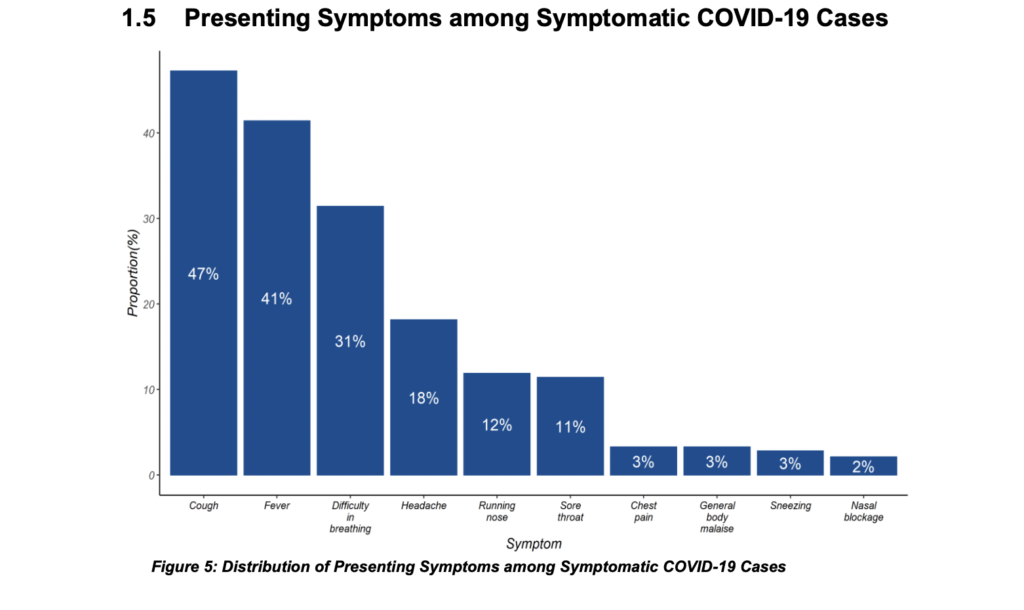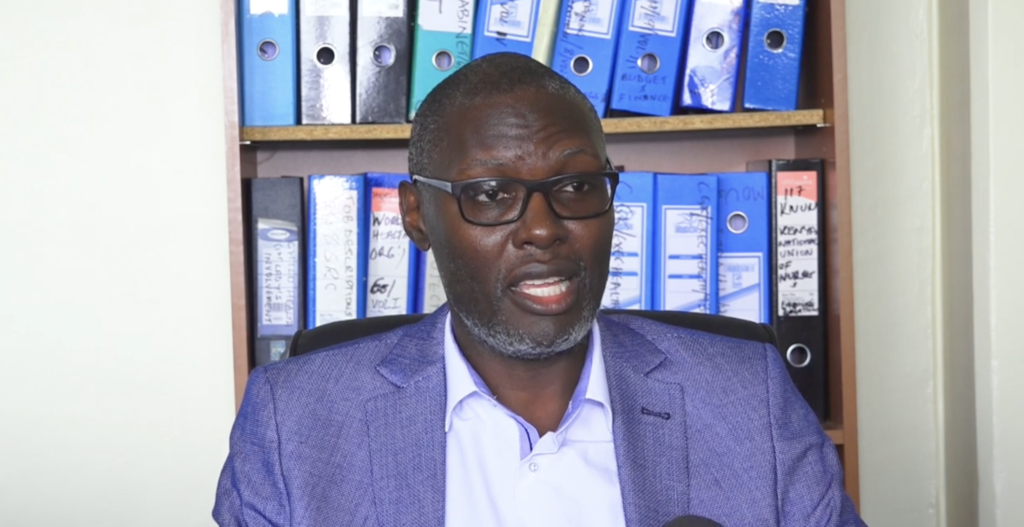In 2008, Joyce Omina cleared her secondary education.
Throughout her secondary school education, her heart harboured passion for working with the community.
Born and raised in Kisumu’s Nyalenda Slums, she well understood the community challenges, and she wanted to be part of the solution.
And today, at 33, Joyce is one of the community health workers in Kisumu, where she is living her dream.
I could knock someone’s door and they would out rightly tell me to go away
Joyce
With a diploma in Community Work, she possesses all the skills and knowledge required of her work.
She is often spotted traversing the densely populated slum.
She has learnt the art of evading the open sewers, hopping over poorly disposed domestic wastes as she moves around.
This sore site is the order of the day here, but this does not divert her attention on her mission.
Covid-19 outbreak
When the Covid-19 pandemic struck in March 2020, the cloud of misinformation that engulfed the nation cast a shadow on the work of community health workers.
Rural and slum areas like Nyalenda were some of the most affected areas.
For Joyce, penetrating households for her usual routine became an uphill task.
Most residents often regarded health workers as spreaders of the respiratory virus.
“I could knock someone’s door and they would out rightly tell me to go away,” says Joyce.
She adds: “Some even told their children not to mingle with my own because they thought we carried the disease from the hospital.”
By June 2020, the number of people contracting the virus begun to rise exponentially.

Isolation beds
President Uhuru Kenyatta ordered each of the 47 counties to set up a 300-bed isolation ward to cater to the rising number of patients.
There was rush to set up ICU services, as the pandemic deepened its claws into the fabric of the health system in Kenya.
During the first wave however, the country fought back, with the Council of Governors revealing that a total of 59, 449 community health workers had been trained on COVID19 management as at July 2020.
Positivity rate was soaring to as high as 26 per cent.
However, according to the ministry of health, 88 percent of the positively confirmed cases were asymptomatic.
On the other hand, the remaining 12 percent presented severe symptoms which included fever, difficulty in breathing and hypoxemia, defined as low oxygen levels.
Home Based Care
Joyce, like the other 2,800 community health workers in Kisumu was among the people that were tasked with ensuring the success of the home-based care and isolation programme.
This was the only way for the country to decrease the pressure in its healthcare system and have only severe cases treated in hospitals.
the training was thorough and we had answers when we went back to teach people how to take care of themselves
Joyce Omina
“It was a relief because you know by that time, the virus was new, nobody understood what we were supposed to do,” she says.
“But the training was thorough and we had answers when we went back to teach people how to take care of themselves,” adds Joyce.
Her task, like her counterparts, was to assess and relay information on whether a patient qualifies for the home-based care and isolation program.
This was done through checking that there is a separate, well-ventilated room for isolation of the patient as well as adequate hygiene utilities such as water to maintain high standards of cleanliness during the recovery period.
Covid-19 treatment
Though no curative drug has been prescribed for Covid-19 until now, the community health workers delivered a prescription of anti-histamine and paracetamol drugs.
These drugs were meant to treat the nasal congestion symptoms as well as fever.
They were also encouraging the patients to indulge in physical activity in the sun to beat the fatigue that kicked in with the infection.
In Kisumu, the county government adopted a policy in 2019, that saw community health workers receive a monthly stipend of 20 dollars.
In addition, they benefited from a health insurance cover dubbed “Marwa” which means “our own”.

Universal Health Coverage
According to the County Executive Member for Health Dr Gregory Ganda, the policy was adopted during the pilot roll out of the universal health coverage program.
In the program, the county identified the pivotal role of these workers in ensuring a water tight health system.
“Much has had to happen and I know the national government did a policy for community health services which was enacted in 2020,” he said.
According to the Ministry of Health, Kenya had about 80, 400 community health workers by 2020, serving a population of close to 7.5 million people.
World Health Recommendation target
According to the World Health Organization, one community health worker should handle at most 100 households.
In Kenya, a dwindling health work force and the ballooning population is tilting the scales, with Joyce, serving 175 households at the informal Nyalenda estate
In Brazil, a government backed community health workers program led to a 32 percent drop-in infant mortality rate and a substantial increase in exclusive breastfeeding.
However, in India, according to WHO, the program ran into headwinds due to resistance from medical professions who demanded payment for the workers.
Dr Ganda notes that the success of the community health workers program is largely dependent on political goodwill.
And as the country firms its straddle on the Covid -9 pandemic wave, it is efforts put in place by people such as Joyce at the grass root level, that educate and weed out ignorance while greasing the cog that drives Kenya’s health care system.
This publication was produced with the financial support of the European Union. Its contents are the sole responsibility of Achieng Laura and do not necessarily reflect the views of the European Union
